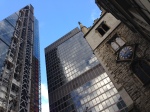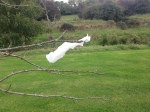I quote The Doors front man Jim Morrison when he said, “This is the end”. However it is not the end in the way you might interpret it. The course I have participated in, “Creating and Publishing Digimedia”, has finished but my interest in certain topics, in particular, Audio Podcasting and Digital Photography has not.
I thoroughly enjoyed creating my first Audio Podcast and I am looking into starting my weekly podcast talking about American Football. I will make it easy to subscribe to through iTunes and an RSS feed. In the weekly podcast I will talk about recent news, injury reports and I will also give a recap of the previous weeks games as well as previewing the upcoming ones.
I will continue to use Audacity which I found is a very useful tool when I was editing my Audio podcast for my assignment.
When I sat down to check the course the first thing that struck me was how easy it now is to communicate ideas to a global audience. The knowledge I have gained in respect to social media tools such as Linkedin and Twitter.
I have found that my use of those media tools has increased as a result of the course. I am also now more aware of the specific language used to communicate effectively. When using twitter it is more effective to tweet original content with audio/video Podcasts or your blogging site instead of posting a link to your site. Doing that doesn’t allow any interaction between you and your followers. This might cause you to lose your audience as you are spamming them.
When blogging at the start of the course I would proofread the posts before publishing them and I found my use of passive language was dreadful. Over the entire course this has gradually improved and I am now very active in watching my use of language so that it does not lose focus.
Finally, I would like to say that I really enjoyed the course as it provided me a completely different learning experience in that ‘Creating and Publishing Digimedia’ has been a practical hands on subject. It is a refreshing change to work directly with the leading technologies available today.
I would to finish with this humorous photograph I took earlier this year in Offaly…..Maybe the world should focus on Ireland’s nuclear program!!!!

Funny Cloud Formation














